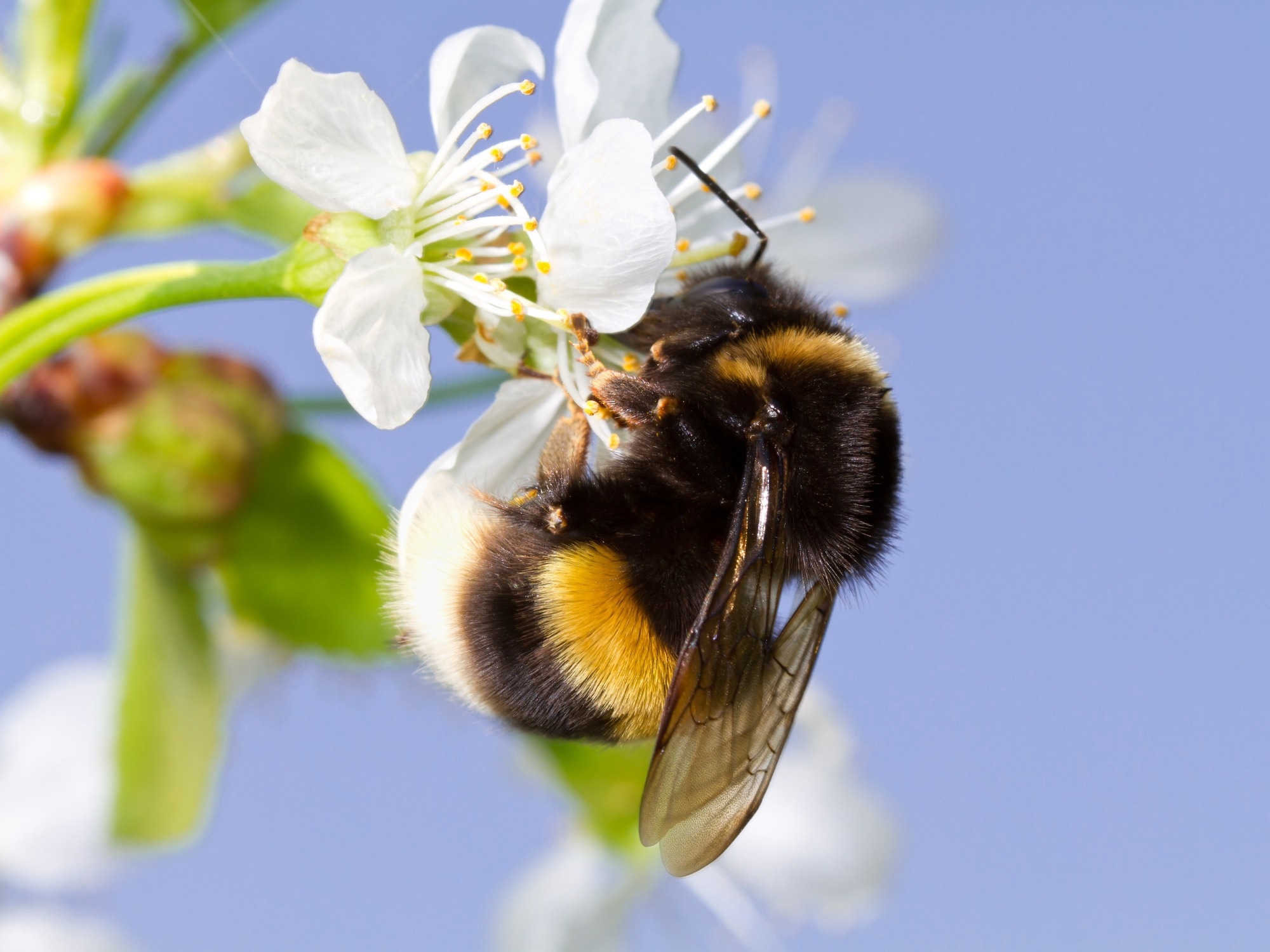According to new research, over the last 120 years, temperature variations have negatively affected the majority of the species of bumble bees. The scientists running the study observed that alterations in temperature had more of a negative effect compared to other factors—like floral resources or precipitation.

Image Credit: Shutterstock.com/ iava777
The study was published in the Biology Letters journal
Bumble bees are important pollinators for wild plants and for the crops humans rely on for food. That’s why we need to develop conservation strategies that account for the future impacts of climate change on bee populations.
Hanna Jackson, Study Lead Author and Masters Student, Biological Sciences, Simon Fraser University
Hanna Jackson is a Master’s student in M’Gonigle Lab.
Jackson and her collaborators examined a present dataset consisting of records on 46 bumble bee species throughout North America between 1900–2020.
Two occupancy models were made by the scientists — one that focused on time and the other that focused on environmental factors — to evaluate the impacts of climate and land-use variables on species’ occupancy. It is a measure of where species are discovered. They discovered that 22 bumble bee species increased and six decreased through time, and the leftover 18 were stable.
They observed that there was an increase in both precipitation and temperature, on average, between 1900 and 2020 in the post-industrial revolution period. Temperature changes negatively impacted the bumble bees, with 37 of the 46 species showing greater declines in occupancy or less favorable occupancy increases under the observed temperature changes than if the temperature had stayed constant.
Significantly, around nine species of bumble bee displayed declines that link to altering temperatures within their ranges. The team did not determine patterns in the other factors that were studied, like precipitation, and only one species dropped declined on floral resources.
As a matter of fact, both floral resources and precipitation had mixed outcomes. Around half of the bumble bee species were affected negatively by changes that were caused by precipitation or floral resources while the other half were impacted in a positive manner.
Hence, scientists came to the conclusion that altering temperatures are a significant environmental factor that drives alterations in bumble bee community composition.
Because bumble bee species likely vary in their future responses to land-use and climate change, conservation action should prioritize individual species, taking into account their unique climate and habitat preferences.
Hanna Jackson, Study Lead Author and Masters Student, Biological Sciences, Simon Fraser University
The collaborators of the study include the US-based Pollinator Partnership, Xerces Society for Invertebrate Conservation, and the Department of Biological Sciences at the University of Southern California.
Research shows climate change negatively impacts bumble bees
Research shows climate change negatively impacts bumble bees. Video Credit: Simon Fraser University.
Journal Reference:
Jackson, H. M., et al. (2022) Climate change winners and losers among North American bumblebees. Biology Letters. doi.org/10.1098/rsbl.2021.0551.